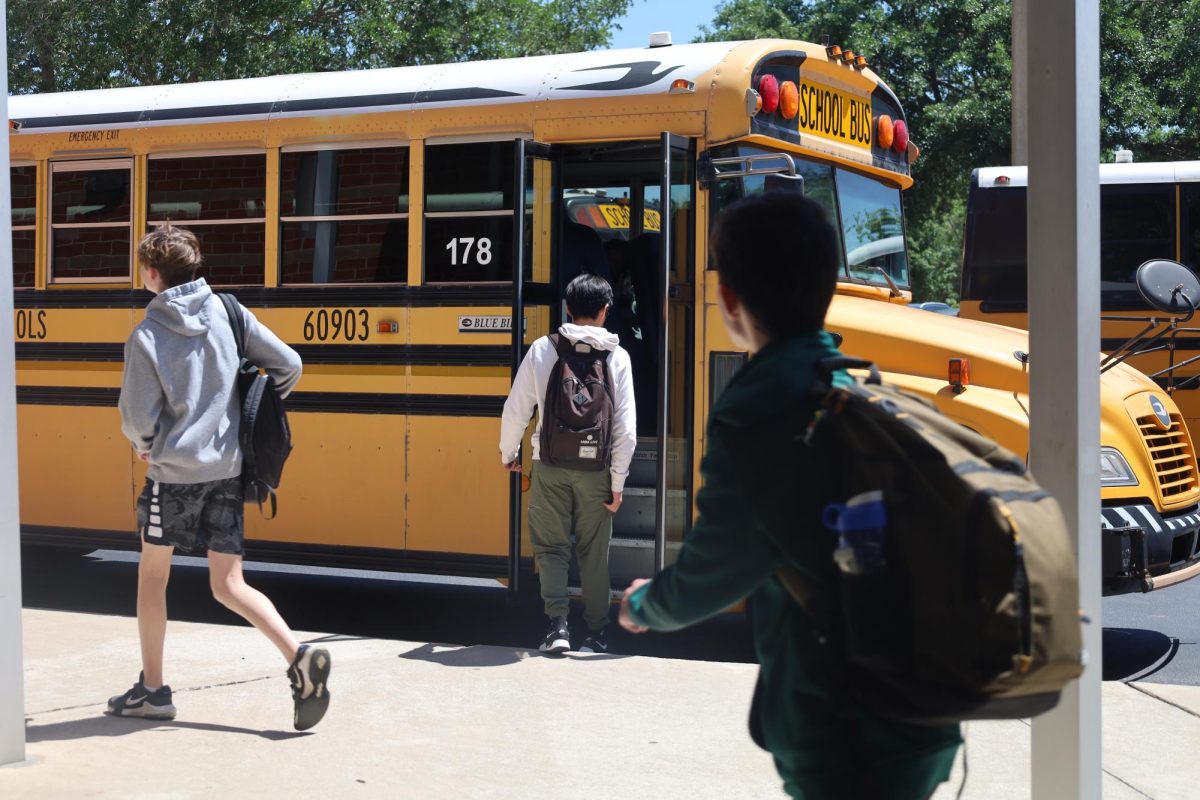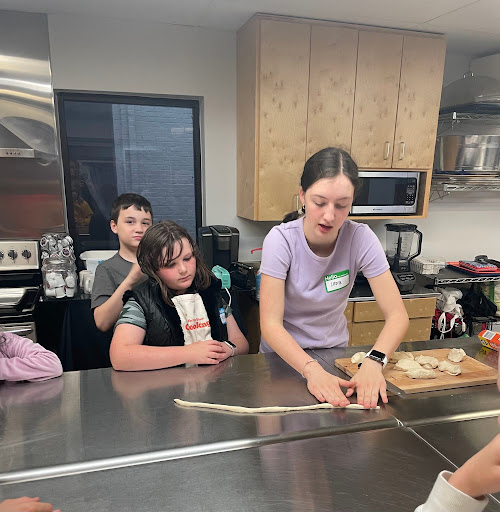Imagine how exhausting it would be to constantly hide who you are, anticipating the looks that people give you once they find out your ethnicity.
Unfortunately, for some groups in Hawaii, this is a reality.
“People see you differently after they find out you’re Micronesian,” junior Kira Wainit said.
In Hawaii, the Micronesian community faces a disproportionate amount of hate and racism. Data from UH Mānoa shows how discrimination has manifested from retail interactions all the way to the workforce.
This doesn’t happen in a bubble, however. It’s important to acknowledge how racism and prejudice is normalized.
Wainit had a teacher in middle school who would often make jokes about her ethnicity.
“He made it okay to [use] those kinds of jokes, so my classmates made them as well,” Wainit said. “‘Oh you’re a murderer. Don’t pull out the knife on me, what you gonna do, stab me?’ At first it was just whatever, they do it all the time, but then it got to a point where I was like ‘Okay, this isn’t a joke anymore’.”
Other students feel that the normalization of these stereotypes is a reflection on the person who perpetuates the stigma, not on themself.
“It’s what other people think. If they think I’m a juvenile, then that’s their thought. If they think I’m going to steal stuff, that’s what they think. At the end of the day, it’s not true,” sophomore Nia Lynn said.
However, these pigeon holes also create situations where Micronesian youth are constantly on the defense.
“I am more open and nice about things but [my cousins] are on the edge, they’re immediately on guard. Because Micronesians don’t have good stereotypes about them, whenever people pass by, they fear they might get discriminated against,” Lynn said.
To avoid this, some people feel like they need to hide themselves.
“I always have this – I wouldn’t say fear, but I don’t let them know what my race is unless they ask me. In English class, we were talking and some guy said we should cut off immigration to Micronesians, and I was like ‘woah, I’m glad I didn’t tell anyone my race here,’” Wainit said.
This may lead to a decline in the community’s mental health. Wainit herself has family members who experience depression and mental illness.
“Micronesian youth go through so many things and it’s like ‘you’re fine’ but no, you’re not,” Wainit said.
However, discrimination against Micronesians is not isolated to Hawaii. Kaslova Michael is a chef working at Hana Koa Brewing Company. Michael moved to Guam when he was six, before he moved to Hawaii, where he said he has experienced no discrimination.
“It wasn’t that hard at that age because [there were] no responsibilities for me,” Kas said. “But looking back now, it was pretty hard. Facing a lot of discrimination, culture change, and opportunities were minimal,” Michael said.
While growing up in Guam, Michael and his brothers discovered ways to connect with the community.
“We just tried to fit in and understand [the] similarities of our cultures,” Michael said.
But, after moving to Oahu, connecting to his culture has always been an issue for Michael.
“I feel I lost a lot of connection to culture. Just understanding it is not the same as living it,” Michael said.
Micahel was not able to fully submerge himself within the culture, as his parents never took him back to Chuuk.
“My parents didn’t want me going back. [They said], ‘there’s nothing back there,’” Michael said. “I think they were wrong about [not] going back.”
Though this sentiment is felt by many community members, some have also been able to maintain cultural practices through their local community.
“There’s these things called gemens and it’s for the first birthday party. You invite every family member and their friends and then you celebrate it until late at night,” Lynn said.
In order to encourage other Micronesian youth to connect to their culture, Wainit believes corridors should be created.
“I feel like I don’t have the time or the resources to connect to my culture. The only things I have are the stories from my mom and dad,” Wainit said. “There should be more outlets for Micronesian youth to share their culture and express themselves.”
This story was originally published on Na Pueo on January 4, 2024.






![It was definitely out of my comfort zone to get [the dress] and decide I loved it enough not to wait and risk not having something that memorable.](https://bestofsno.com/wp-content/uploads/2024/04/Precious_20180902_JRS_00008_ed1.jpg)


![Sophomore Sahasra Mandalapu practices bharatanatyam choreography in class. These new dances will be performed in an annual show in February. Mandalapu found that practicing in class helped her overcome stage fright during her performances. “When [I] get on stage, Im nervous Im going to forget, even though Ive done it for so long,” Mandalapu said. “Theres still that little bit of stage fright [when] I second-guess myself that I dont know it enough, but I do because Ive been practicing for a whole year.”](https://bestofsno.com/wp-content/uploads/2024/05/Sahasra-6-Large-1200x844.jpeg)

![In their full runway outfits, (from left) Audrey Lee 25, Olivia Lucy Teets, 25, Fashion Design teacher Ms. Judy Chance, and Xueying Lili Yang pose for a photo. All three girls made it to Austin Fashion Week by getting in the top 10 in a previous runway show held by Shop LC.
[I like my students] creativity and how they can look at a fabric and make it their own, Ms. Chance said.](https://bestofsno.com/wp-content/uploads/2024/04/IMG_9686-e1714088765730-1129x1200.jpeg)














![IN THE SPOTLIGHT: Junior Zalie Mann performs “I Love to Cry at Weddings,” an ensemble piece from the fall musical Sweet Charity, to prospective students during the Fine Arts Showcase on Wednesday, Nov. 8. The showcase is a compilation of performances and demonstrations from each fine arts strand offered at McCallum. This show is put on so that prospective students can see if they are interested in joining an academy or major.
Sweet Charity originally ran the weekends of Sept. 28 and Oct. 8, but made a comeback for the Fine Arts Showcase.
“[Being at the front in the spotlight] is my favorite part of the whole dance, so I was super happy to be on stage performing and smiling at the audience,” Mann said.
Mann performed in both the musical theatre performance and dance excerpt “Ethereal,” a contemporary piece choreographed by the new dance director Terrance Carson, in the showcase. With also being a dance ambassador, Mann got to talk about what MAC dance is, her experience and answer any questions the aspiring arts majors and their parents may have.
Caption by Maya Tackett.](https://bestofsno.com/wp-content/uploads/2024/02/53321803427_47cd17fe70_o-1-1200x800.jpg)
![SPREADING THE JOY: Sophomore Chim Becker poses with sophomores Cozbi Sims and Lou Davidson while manning a table at the Hispanic Heritage treat day during lunch of Sept 28. Becker is a part of the students of color alliance, who put together the activity to raise money for their club.
“It [the stand] was really fun because McCallum has a lot of latino kids,” Becker said. “And I think it was nice that I could share the stuff that I usually just have at home with people who have never tried it before.”
Becker recognizes the importance of celebrating Hispanic heritage at Mac.
“I think its important to celebrate,” Becker said. “Because our culture is awesome and super cool, and everybody should be able to learn about other cultures of the world.”
Caption by JoJo Barnard.](https://bestofsno.com/wp-content/uploads/2024/01/53221601352_4127a81c41_o-1200x675.jpg)





